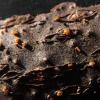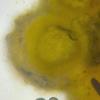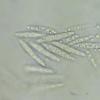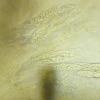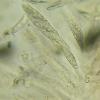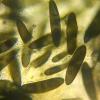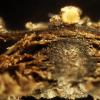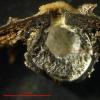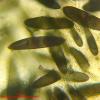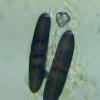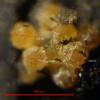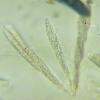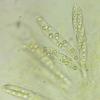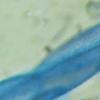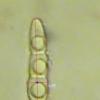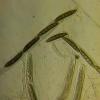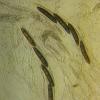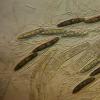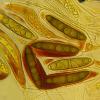
17-11-2025 21:46
Philippe PELLICIERBonjour,Récolté sur bois pourrissant de feuillu

19-11-2025 13:04
 Bruno Coué
Bruno Coué
Bonjour,je sollicite votre avis pour la récote

16-11-2025 21:09
 Robin Isaksson
Robin Isaksson
Anyone recognize this acc. to pictures.? Found on

18-11-2025 13:59
Nogueira HéctorNovember 14, 2025 Brazuelo (León) SPAIN Hymenosc

17-11-2025 19:14
herman lambertApothécie discoïde 0.6 cm diam., orangeFace hym�

17-11-2025 21:57
Philippe PELLICIERBonjour,Récolté sur bois de feuillu mort dur, no

14-11-2025 16:26
 Marian Jagers
Marian Jagers
Hello everyone, On dead wood of Cytisus scoparius

15-11-2025 23:22
Mario FilippaHello,this is what I think to be Hymenoscyphus mac

15-11-2025 20:25
 Riet van Oosten
Riet van Oosten
Hello, Found by Laurens van der Linde, Nov. 2025
I checked a few fruiting bodies, all of them were accompanied by large, dark spores, so I also present a photo of them. I don't know if they are related to this mushroom?
Any suggestions at least as to the type?
Mirek
When I have free time, I will try to work on this collection. Maybe I can capture more details and take measurements.
Thank you once again for making a successful attempt at identification despite such poor documentation.
best regards
Mirek
Hi,
First of all, you have to check if the immersed one is Massaria conspurcata.
Then, indeed, you have to compare the orange one to Flammocladiella decora.
It has been already recorded on Massaria conspurcata. Please, measure ascomata diameter.
Alain
I think your suggestion makes very sense :)
When it comes to Massaria, you are probably right, but I prefer others to judge it.
- substrate is suitable - Prunus padus
- 4-spore ascus
- example dimensions are given in the pictures
- Flammocladiella spores clearly rough (feature poorly visible in the photos).
What is your opinion?
Mirek
Good job, we can recognize both fungi.
Alain
Once again, thank you all for help with identification!
best regards
Mirek

Would someone be so nice and make this article available for me to read it? Unfortunately, I do not have access to it.
Although the photos I have seen show that Flammocladiella anomiae is more orange and my fruiting bodies were yellow, unless it is a not very important trait?
If anyone is interested in the material, I will gladly send it.
Mirek

